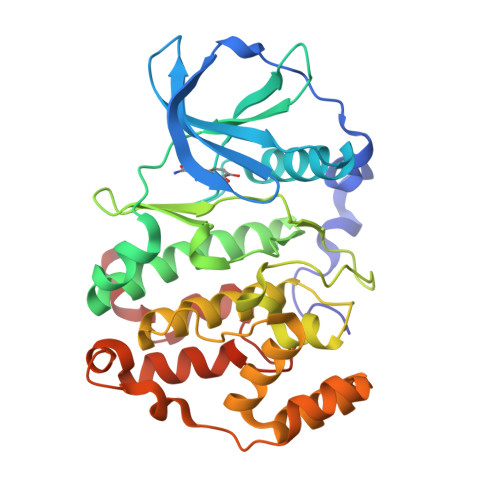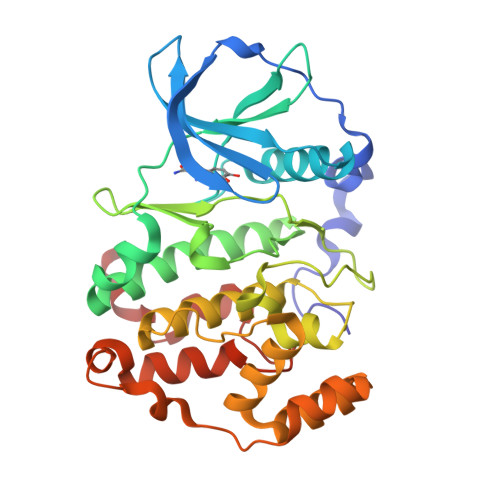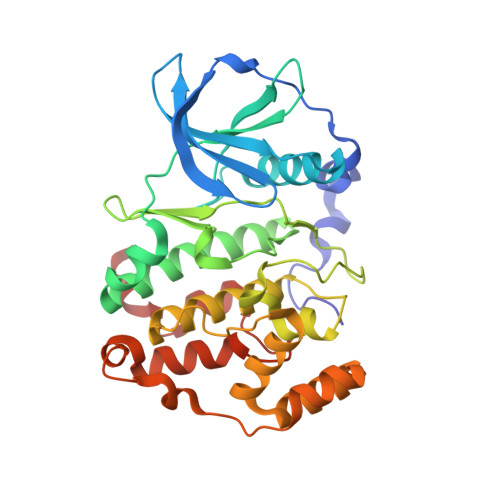Inhibition of protein kinase CK2 by flavonoids and tyrphostins. A structural insight.
Lolli, G., Cozza, G., Mazzorana, M., Tibaldi, E., Cesaro, L., Donella-Deana, A., Meggio, F., Venerando, A., Franchin, C., Sarno, S., Battistutta, R., Pinna, L.A.(2012) Biochemistry 51: 6097-6107
- PubMed: 22794353
- DOI: https://doi.org/10.1021/bi300531c
- Primary Citation of Related Structures:
4DGM, 4DGN, 6QS5 - PubMed Abstract:
Sixteen flavonoids and related compounds have been tested for their ability to inhibit three acidophilic Ser/Thr protein kinases: the Golgi apparatus casein kinase (G-CK) recently identified with protein FAM20C, protein kinase CK1, and protein kinase CK2. While G-CK is entirely insensitive to all compounds up to 40 μM concentration, consistent with the view that it is not a member of the kinome, and CK1 is variably inhibited in an isoform-dependent manner by fisetin and luteolin, and to a lesser extent by myricetin and quercetin, CK2 is susceptible to drastic inhibition by many flavonoids, displaying with six of them IC(50) values < 1 μM. A common denominator of these compounds (myricetin, quercetin, fisetin, kaempferol, luteolin, and apigenin) is a flavone scaffold with at least two hydroxyl groups at positions 7 and 4'. Inhibition is competitive with respect to the phospho-donor substrate ATP. The crystal structure of apigenin and luteolin in complex with the catalytic subunit of Zea mays CK2 has been solved, revealing their ability to interact with both the hinge region (Val116) and the positive area near Lys68 and the conserved water W1, the two main polar ligand anchoring points in the CK2 active site. Modeling experiments account for the observation that luteolin but not apigenin inhibits also CK1. The observation that luteolin shares its pyrocatechol moiety with tyrphostin AG99 prompted us to solve also the structure of this compound in complex with CK2. AG99 was found inside the ATP pocket, consistent with its mode of inhibition competitive with respect to ATP. As in the case of luteolin, the pyrocatechol group of AG99 is critical for binding, interacting with the positive area in the deepest part of the CK2 active site.
Organizational Affiliation:
Venetian Institute of Molecular Medicine (VIMM), Padova, Italy, Via G. Orus 2 35129 Padova, Italy.



















